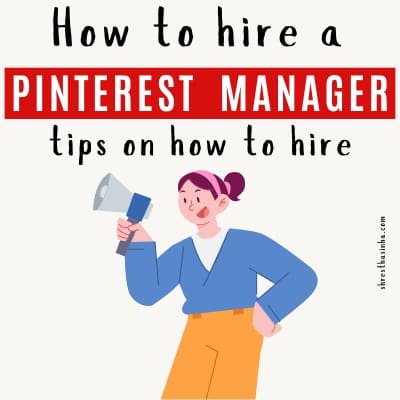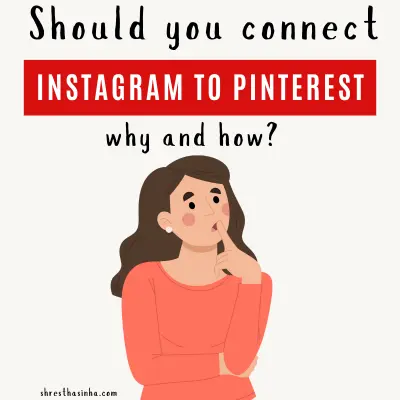Why is my Pinterest traffic dropping- What do I do about it?
When pinning on a Pinterest account for a long time, one of the most common questions is, “Why is my Pinterest traffic dropping?”
I understand why this would be concerning, especially when you’re working hard to drive traffic to your blog or business through Pinterest.
It’s easy to get fixated on the numbers, but stressing too much about a temporary dip in traffic can affect your mental health and cause burnout in the long run.
First things first—take a deep breath. I’ve been there and figured out some of the main reasons why Pinterest traffic drops, so you’re not alone in this.
This might happen for several reasons, and I’ve listed the most common ones below.
The good news is that once you identify what’s causing the drop, there are usually ways to fix it.
Whether you need to refresh your strategy due to algorithm changes, seasonal fluctuations, or simply because your strategy needs to be updated, I’m confident you’ll find some clarity and direction here.
And hey, if you’re feeling a bit lost or overwhelmed, don’t worry!
Pinterest can be tricky, but once you know what’s happening, you can adjust your strategy and get that traffic flowing again.
So, why is your Pinterest traffic dropping? Let’s dive into some of the most common reasons and figure out how to fix them!
Top 5 Reasons Why is my Pinterest Traffic Dropping
1. No fresh pins
One of the most common reasons for a drop in Pinterest traffic is simply not having fresh pins. I’ve encountered accounts that haven’t posted any new pins for nearly three to four months, which can hurt their visibility.
While some accounts do exceptionally well even without posting fresh content, if your account is stagnant and lacking activity, Pinterest takes note. Over time, it may start to prioritize other accounts that are more engaged, causing your traffic to dwindle.

Think about it: if you’re not sharing fresh pins, Pinterest doesn’t have much to work with when showing your content to users.
The algorithm thrives on fresh content and needs to understand what your account is about to distribute your pins effectively. In 2024, keeping your account current is crucial for your Pinterest strategy.
Regularly adding new and engaging pins signals to Pinterest that your account is active and helps showcase the variety of content you’re creating.
This can lead to increased impressions and clicks as Pinterest recognizes your account as a valuable source of inspiration. So, if you’re noticing a drop in traffic, it might be time to focus on generating some fresh pins and reviving your Pinterest presence!
2. Seasonality
Seasonality is another significant factor contributing to your Pinterest traffic fluctuations.
You might notice in your Pinterest analytics that your traffic was steadily increasing until suddenly, it took a downturn and seemed to stagnate.
This drop could be attributed to seasonal changes or upcoming festive events.
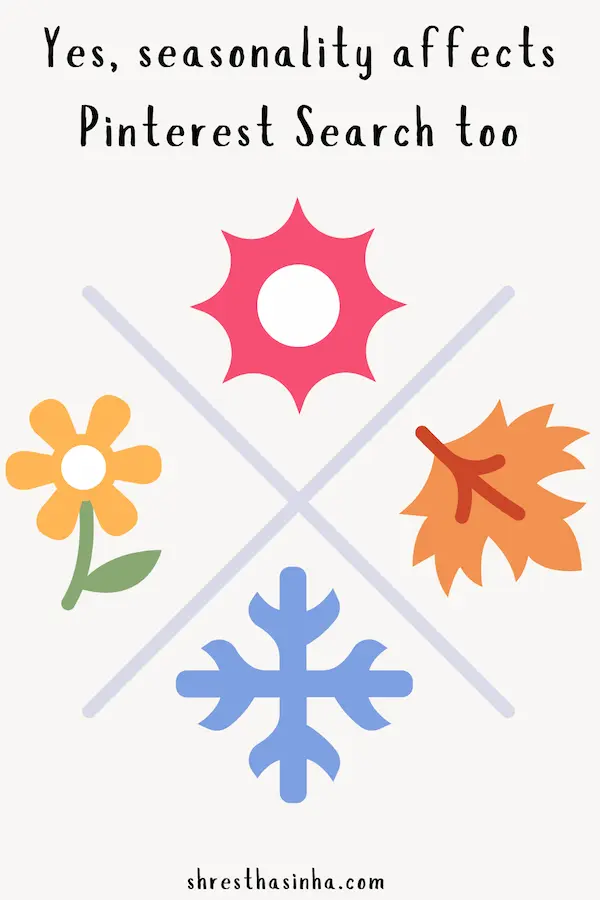
Pinterest is highly influenced by seasonal trends, meaning that certain types of content perform better at specific times of the year.
For example, if the holidays are near, users will likely search for festive recipes, gift ideas, or home decor inspiration related to the season.
You may see a dip in engagement if your content doesn’t align with current seasonal interests.
It’s essential to take advantage of these seasonal trends and plan your content accordingly.
By preparing and pinning relevant seasonal content in advance, you can maintain a steady flow of traffic rather than experiencing the usual ups and downs.
A mix of evergreen (always relevant) and seasonal content can help you better navigate traffic fluctuations.
This approach helps ensure you capitalize on timely trends and provide consistent value to your audience year-round. So, keep an eye on the calendar and be proactive about your Pinterest strategy to maximize seasonal opportunities!
3. Death of a Popular Pin
Another prevalent reason for a drop in Pinterest traffic is the phenomenon I like to call “the slow decline of popular pins.”
This often occurs when a pin that went viral and brought traffic for years—say, three to four years—starts to lose traction.
Many accounts find that popular pins are responsible for generating 90% of their traffic, so their losing traffic is a big deal.

However, Pinterest constantly evolves and prioritizes newer content that captures users’ interests.
As your most popular pins lose impressions, you may notice a significant drop in outbound clicks, leading to decreased overall traffic. If your go-to pins are experiencing this decline, it can feel like a permanent loss.
Creating fresh, engaging pins is crucial to deal with this issue and replace the traffic lost from those older, popular pins. Focus on generating new content that resonates with your audience and aligns with current trends.
I recommend consistently publishing pins on related topics to maintain and even boost your traffic. If some of your older pins are fading, your new creations can help fill the gap and keep your traffic flowing.
Staying proactive in your pinning strategy will ensure you’re always in the game and adapting to Pinterest’s changing landscape.
4. Other’s Pins
There’s a section on Pinterest known as “Others’ Pins,” the traffic generated from someone else repinning your pin can be crucial for many accounts in boosting impressions and overall traffic.
However, if you’re noticing a decline in the impressions of those repins, you’ll likely experience a traffic drop on your account as well.
It’s important to recognize that this aspect of your Pinterest strategy is largely out of your control.
You can’t dictate how others engage with your pins, and sometimes, users can delete pins that have been driving traffic to your account, further impacting your metrics.
A quick way to check the traffic status of your pins and others pins is below-
Step 1
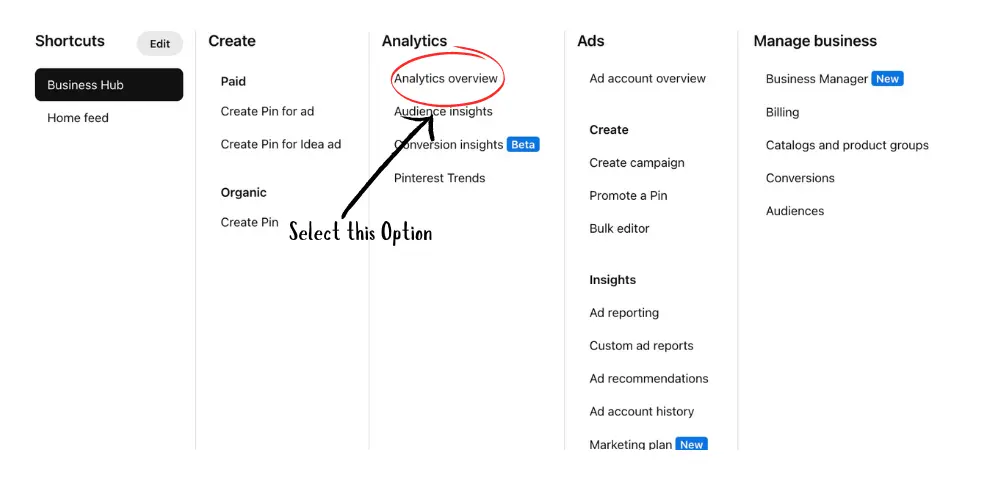
Step 2
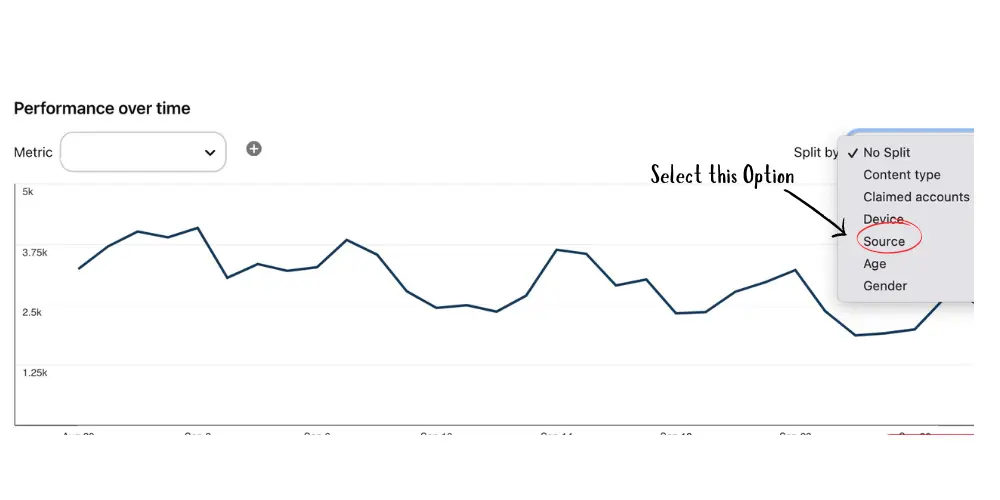
Step 3

Given this reality, it’s essential to strengthen your Pinterest presence through effective SEO strategies.
By ensuring that your pins are optimized for Pinterest search, you can enhance the visibility of your content and reduce your reliance on others’ pins for traffic.
This is an aspect that is out of your Control, so if you find out this is happening, just ignore it and try to focus on your Pinning strategy.
So, while it’s great to benefit from repins, prioritizing your content and optimizing it for search will provide a more stable foundation for your account’s growth. This proactive approach will keep your traffic flowing, even if others’ engagement fluctuates.
5. Shadow Ban
One of the final reasons your Pinterest traffic might drop is the possibility of your account being shadowbanned.
Pinterest has filters to ensure all accounts adhere to its guidelines and rules. If they detect unusual activity—like excessive repinning or spamming—they can place your account in a “timeout,” making it harder for your content to be seen.
If you suspect your account might be shadowbanned, I recommend contacting Pinterest support immediately.
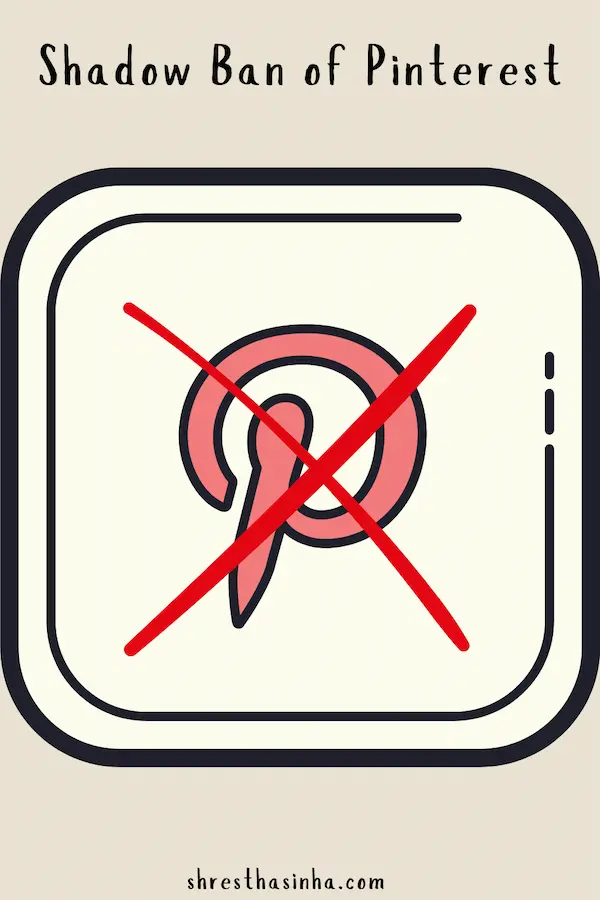
Many users have experienced a significant traffic boost after addressing the issue directly with support.
In the meantime, keep publishing new pins. If you notice that your new pins are receiving little to no impressions, that’s a strong indicator that your account may be shadowbanned.
Now, you might wonder if you should continue to work on a shadow-banned account.
While you can still try to make it work, if you don’t see any improvements after four to five months, it might be time to consider starting fresh with a new account.
It can be frustrating, but sometimes, a clean slate is what you need to regain traction and visibility on the platform.
Don’t let a shadowban discourage you; use it as a learning experience to refine your approach!
6. Mindless Repinning of Your Pins
Pinterest no longer supports repinning your own content, but I’ve noticed that many accounts still engage in this practice, posting the same pin to multiple boards or even repinning 10 to 15 times a day.
While this may work temporarily, I truly believe it’s a strategy that won’t hold up in the long run. It’s only a matter of time before you risk getting caught in Pinterest’s spam filters, which can significantly drop your account’s visibility.
From my experience, I never recommend repinning your content. Instead, it’s far more beneficial to create fresh pins.

You don’t need to post many pins daily—just one high-quality, original pin can make a difference. Taking a little time to make small changes to your designs and descriptions can keep your content relevant without overwhelming your account with repetitive posts.
I urge you to reconsider your strategy: prioritize fresh pins over mindless repinning. Pinterest is prioritizing fresh content now more than ever, and focusing on new pins should be your go-to approach for success in 2024.
Doing so will protect your account and enhance your chances of reaching a broader audience.



